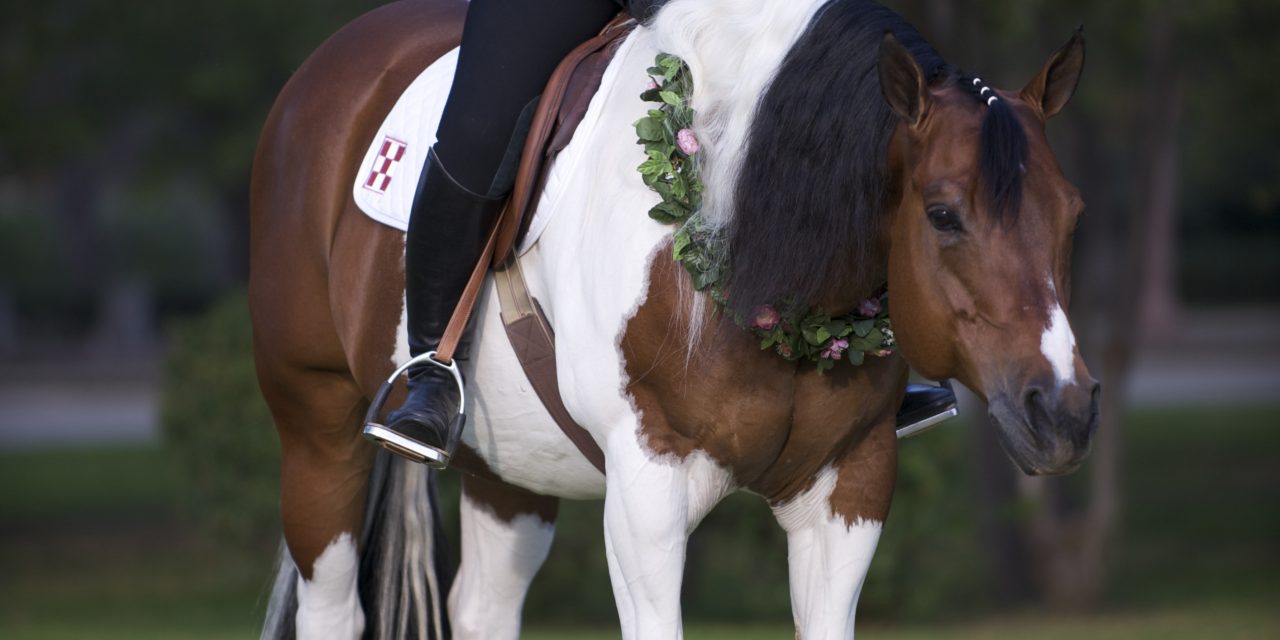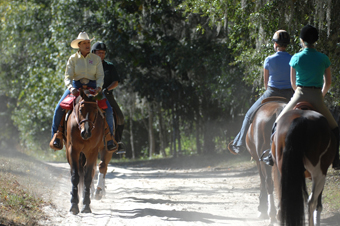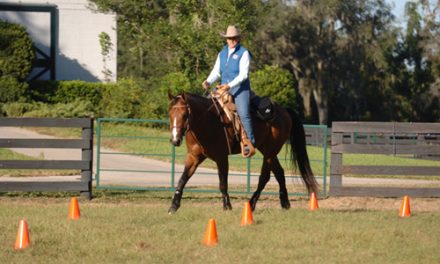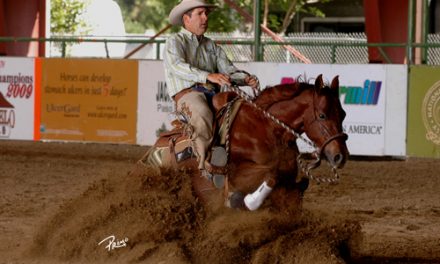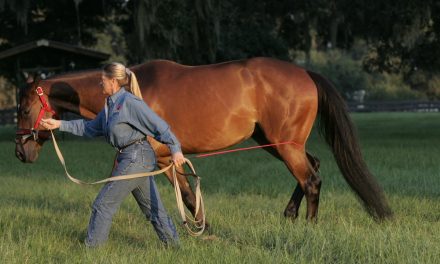Palm Partnership Training
Building a Partnership with Your Horse
 Riders frequently ask how to stay in control in new situations. In fact, the most common question I am asked at clinics and featured appearances relates to training and riding outside of the horse’s normal environment. Riders are concerned about losing control and what to do if the horse is disobedient, bucks, or rears. These responses from the horse usually cause the rider to become fearful and apprehensive about getting hurt.
Riders frequently ask how to stay in control in new situations. In fact, the most common question I am asked at clinics and featured appearances relates to training and riding outside of the horse’s normal environment. Riders are concerned about losing control and what to do if the horse is disobedient, bucks, or rears. These responses from the horse usually cause the rider to become fearful and apprehensive about getting hurt.
The best way to avoid these problems before they arise is to exercise the horse before going into a new environment in order to release what I call the horse’s “inner energy.” When a rider takes his/her horse into a new situation, the horse will almost always become overly sensitive and be higher strung in the new surroundings. Riders tend to expect that the horse will work and perform outside in the same way as he does at home. This is not the reality, especially for horses that have not been seasoned by going different places and traveling many miles over many years.
Any fit and healthy horse will have some level of inner energy that must be released before he can concentrate on the task at hand. The level of inner energy can vary in different horses, but it is always there in high strung or sensitive horses, and some lazy horses as well. When a horse has not released his inner energy, he will be thinking “fast.” Remember, you will be safe and able to teach a horse only if the horse is thinking “slow.”
You can recognize when a horse is thinking “fast” if he is turning his head and moving his ears quickly and if his movements are fast. The horse’s breathing is another important indicator, especially when riding outside. A horse will try to smell with big breaths if he is unsure or afraid. He will wring or switch his tail if he is irritated or frustrated.
One of the best ways to help the horse release this inner energy is through what is called “forced exercise.” There are three types of forced exercise: (1) longeing, (2) liberty work, and (3) ponying. Of these three, the most important to master is longeing. Personally, I feel longeing is the most important form of forced exercise because you can use it anytime and anywhere. All you need is a good fitting halter, a cotton longe line, and a lunge whip. The longe whip should have a minimum length of three feet with a tassel that ends with a little “snapper.”
There are a few rules to follow when longeing. If the horse is already bridled and needs to be longed, simply fit the halter over the bridle. Attach the longe line either over the nose (for more response) or under the chin. A longe line that ends in a chain will be more severe than a simple cotton line with a snap end.
Before longeing with a bridle on, it is very important to secure the reins so that the horse cannot get them over his head, step on them, or get a leg between them. To do this, place the halter on over the bridle. Attach the longe line, with or without chain end, to the horse’s halter either by threading it over the nose or under the chin. If you are riding in Western tack, bring the reins under the pommel and through the hole under the pommel, and tie them in a knot. Loop the knotted end over the saddle horn. Make sure that the reins are not so loose that the horse could put his nose down on the ground or get a leg through them. Be equally careful not to tie the reins too short as it will restrict the horse’s head carriage. If you are riding in English tack, the easiest way to handle the issue of reins is simply to take them off.
While longeing your horse, he will tell you if he has inner energy to release through the common signs of shaking his head like he is saying “no,” flicking his ears with tight or tense muscles in his neck and body, drastic loss of attention, and wanting to run, buck, kick up or kick at you. Your horse will be ready to focus on you and what you are asking of him once you have released his inner energy through longeing (or some other form of forced exercise). You then will be in control and able to maintain safety.
If you want more information on longeing, Part 5 of my Longevity Training Video Series provides you with detailed instruction on the art of longeing. I also recommend the DVDs in the Longevity Training series that cover “Working at Liberty” and “Ponying.” In addition, Dressage Principles, Parts 1 and 2, cover rider balance and rider aids, and they will help you to make sure that you are not creating frustration energy in your horse by using improper aids and by riding unbalanced. My final recommendation is Private Lesson Natural Balance, Bending Parts 1 and 2.
Keep in mind, the saying “there is safety in numbers” aptly applies to riding. Trail riding, or riding around a new show grounds, with a calm and “seasoned” horse and rider combination will give you and your horse confidence.
Another way to give yourself more confidence is to check out the new environment in advance. Take a walk on the trail that you are going to ride so that you can scout out any problem spots beforehand.
Always remember that you are in charge of your own safety first but also the safety of your horse. There is a fine line between limiting yourself because of fear and avoiding situations that you are unprepared for and only you (or a trained equine professional) can make that distinction.
This material is adapted from a series of articles I did with writer Cynthia McFarland for Trail Rider Magazine. Many trail-training lessons can be found in my book, Training Outside the Box. Find this, along with other helpful training materials, by visiting www.lynnpalm.com, or call 800-503-2824.

